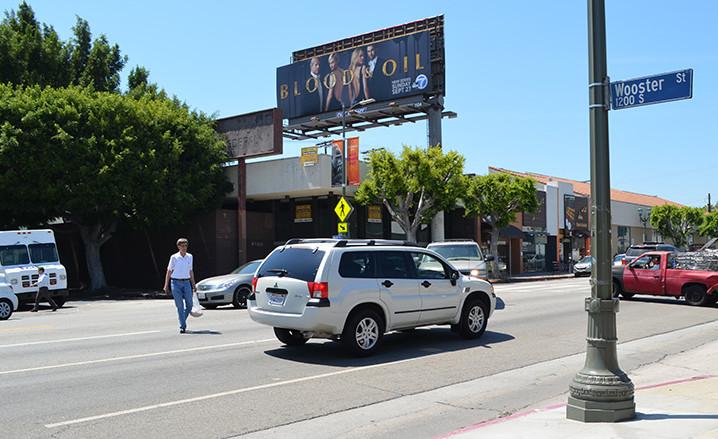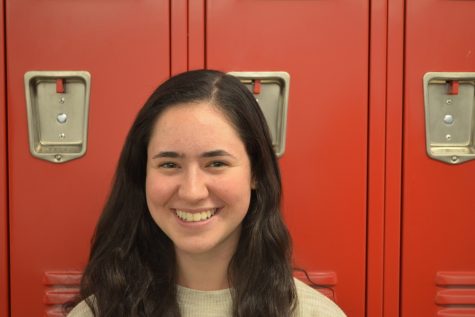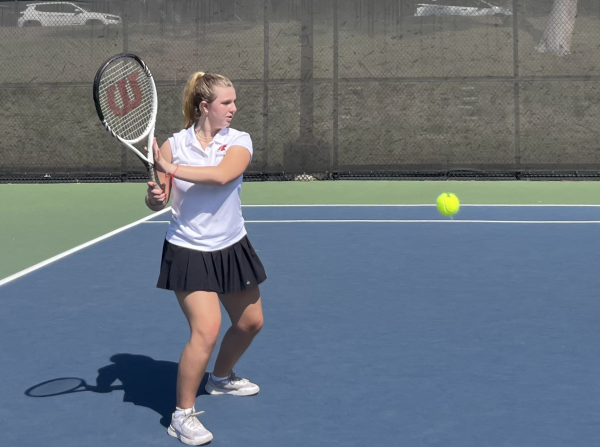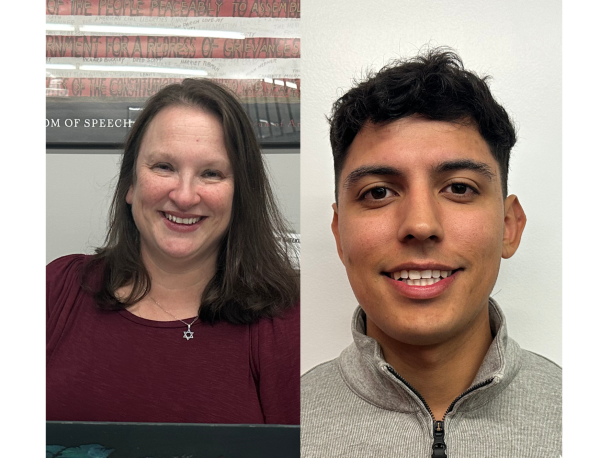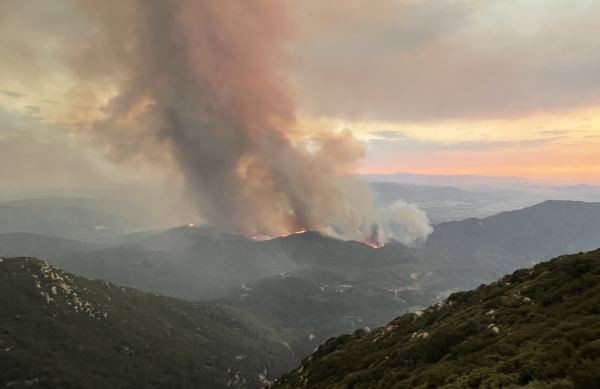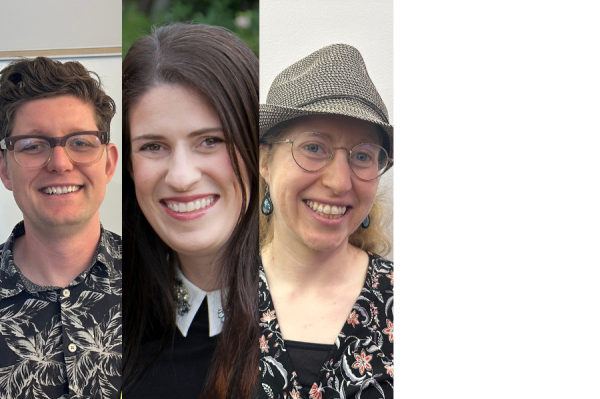Accident shines light on dangerous intersections
PICO: The intersection of Pico Blvd, and Wooster, where Elat Market is located, was ranked No. 19 in a Los Angeles Times study of the most accident-prone intersections for pedestrians in L.A. County. Seventeen people were injured there between 2002 and 2013.
September 15, 2015
This past July, a member of the Shalhevet community was involved in a serious pedestrian accident on Gregory Way and La Cienega Boulevard.
It was an accident – by definition, “an undesirable or unfortunate happening that occurs unintentionally and usually results in harm or loss.” But according to the Los Angeles Times, though clearly unintentional, this accident was not entirely surprising.
A few days later, on July 12th, The Times published an analysis on page one of its Sunday paper which showed La Cienega and Gregory is was among L.A. County’s more dangerous intersections for pedestrians – even though it has crosswalks and a traffic light.
Using a complex statistical formula that analyzed many factors, the Times analyzed police accident reports from 2002 to 2013 covering 25,821 intersections where pedestrian-involved accidents had occurred.
Gregory and La Cienega ranked No. 316, meaning it is the 316th-worst such intersection in Los Angeles County, with 13 pedestrians hit there between 2002 and 2013.
That placed it among the worst 10 or 15 intersections on the West side, but several are worse. One block to the north, the corner of La Cienega and Wilshire Boulevard is ranked 225th.
By far the most dangerous intersection near Shalhevet is the corner of Pico Boulevard and Wooster Street, ranked No. 19, with 17 pedestrian accidents recorded. That’s the corner where Elat Market is located.
Pico and Wooster has no traffic light and only one crosswalk, going north-south across Pico on the western side.
L.A. City Councilman Paul Koretz,, who represents the area, told the Boiling Point the Department of Transportation probably hasn’t put traffic lights there because it is just one block away from Pico and Robertson, which has lights and four crosswalks.
“The DOT doesn’t like putting in a signal that’s close to another signal, but I don’t buy it,” Councilman Koretz said. “I think there’s a way to coordinate timing so that it doesn’t affect traffic, maybe by timing it so that both lights [on Wooster and on Robertson] turn green and red at the same time.”
Los Angeles Police Sergeant Javier Lara, a 21-year veteran who was worked on assignments including traffic enforcement and collision investigation, offered another possible solution for Pico and Wooster.
“It could be improved with a crosswalk that had high-visibility signs,” Sgt. Lara said, “and overhead warning lights activated by motion sensors or manually activated when pedestrians are ready to cross.”
But he agreed that the optimum solution would be a traffic light.
By contrast, La Cienega and Gregory, located in Beverly Hills, already has crosswalks and a traffic light, even though it’s just south of Wilshire Boulevard.
“It’s a difficult intersection,” Mr. Koretz said, who was familiar with it even though it’s in Beverly Hills and not in his district. “I’m not sure what else they can do. They could put a crossing guard there. They could also put a little more time [in the lights] heading east-west. I’m not sure if adding anything besides timing would be logical.”
Los Angeles tries not to wait for an accident to improve safety, Mr. Koretz said, so constituent concerns are taken seriously.
“We try to be proactive,” said the councilman. “When we identify an intersection where something needs to be done, we push for it.”
But he said sometimes it takes time to get the funding for those changes. At $150,000 per intersection, traffic lights must be approved by the City Council.
If there’s already a light there, though, he said, adding just a half of or a complete second to the yellow and red lights usually fixes the problem.
“We need to do that on our most dangerous intersections,” said the councilman. “That will help a lot in terms of driver safety.”
Sgt. Lara said that sometimes, an intersection can be fixed as easily as adding as adding a clearly marked crosswalk. Other times, adding warning lights to a crosswalk or a traffic light is necessary.
Falling just a bit lower on the rankings of dangerous intersections are Pico and Robertson, with 11 recorded pedestrian accidents, and Fairfax Avenue and Third Street, with 12 recorded.
The three-way intersection closest to Shalhevet – Fairfax, Olympic and San Vicente – is not on the list, meaning there have been no pedestrian-involved accidents there at all at least since 2002.
LAPD Wilshire Division Officer Ivan Wolkind said it could be that pedestrians are extra cautious there because the intersection looks so intimidating.
“It is dangerous and it looks dangerous,” said Officer Wolkind, who is the father of sophomore Rosie Wolkind. “When people get complacent being at the same intersections many times, maybe that is when they are more prone to getting in an accident.”
Junior Adam Taryle said that he usually waits for the walk sign to light up before crossing the intersection by Shalhevet.
“If I saw a green but no walk sign, I wouldn’t cross in a big street like the one here [by Shalhevet],” said Adam. “But if it is a small street I would cross without one.”
Other areas have because pedestrians are frustrated when lights are too long and so they try to skip lights, Mr. Wolkind said.
According to a 2007 report by the Center for Problem-Oriented Policing, problems that increase the likelihood of pedestrian accidents include the lack of a proper crossing time for pedestrians, poor sidewalk conditions that may induce crossers to seek better walking conditions along the street, and the absence of sidewalks in certain areas,
To reduce pedestrian accidents, Mayor Garcetti last year proposed a far-reaching safe streets initiative. His goal is to have zero pedestrian-related deaths in Los Angeles per year by 2020, with benchmark goals beginning this year and in 2017.
According to the vice mayor of Beverly Hills, John Mirisch, Mayor Garcetti’s undertaking is based on a Swedish project called “Vision Zero.” Developed in 1995, the program was designed to radically change the traffic system in order to eliminate fatalities and serious injuries due to road accidents by 2020.
“It’s difficult to say it is realistic to get something down to zero, but certainly in Sweden they have had a lot of success with significantly reducing the number of deaths in traffic,” Mr. Mirisch said.
Measures taken in Sweden have included redesigning roads, reducing speed limits, and extensively analyzing highway safety.
“Is zero realistic? Maybe not,” Deputy Mayor Mirisch said. “But I do think that you’re going to save a significant number of lives, which means that it’s worthwhile.”
Mayor Garcetti proposed several improvements in his report, including thorough reviews of traffic conditions around schools, new crosswalks and traffic signs, and more convenient time signals on crosswalks for pedestrians.
“The goal of ending pedestrian deaths,” he wrote in a forward to the project report, “will be met in stages by studying where each fatal collision occurred and if anything could have been done to prevent it.”
Beverly Hills is working on something called the Complete Streets model, said Mr. Mirisch.
It does not have a specific current focus because many of the city’s traffic problems were fixed decades ago, according to the deputy mayor. For instance, he said, the city of Beverly Hills made diagonal crosswalks that reduce pedestrian accidents in those intersections. La Cienega and Gregory does not have one, however.
The Shalhevet accident was in Beverly Hills, but the Boiling Point was not able to reach anyone at the Beverly Hills Police Department to discuss the La Cienega and Gregory intersection.
What everyone agrees on is that pedestrians should always be aware on the streets and cross at the crossing.
“Cross at the crossing, even if you have to walk up the street a little bit,” said Mr. Wolkind. “The majority of accidents that I have been involved in is when a pedestrian has tried to cross outside the crossing.”
And then there’s simple negligence on the part of both pedestrians and drivers.
“It’s hard to educate people on better pedestrian practices but maybe we should do more of that,” said Councilman Koretz.
“Driving today, people have so many distractions and they need to pay more attention to what they are doing. People are drinking coffee, fiddling with the radio, looking at the screen- those things still affect the driving.”

